
*Image Source/ caption*
'South Korean Foreign Minister, Yu Myung-whan, right, and Unification Minister, Hyun In-taek, report on North Korea’s rocket launching at the National Assembly, April 6.'
http://english.hani.co.kr/arti/english_edition/e_northkorea/348430.html
N. Korea’s satellite prompts S. Korea’s call to extend its missile range: While critics suggest increasing the missile range is an unnecessary step in restoring peninsular stability
Posted on : Apr.7,2009 11:56 KST Modified on : Apr.7,2009 12:22 KST
South Korean Prime Minister Han Seung-soo told the National Assembly on April 6, “It’s time for defense and diplomatic authorities to seriously review the issue of revising the South Korea-U.S. missile guidelines.” Remarks made by Han over the need to redraw the South Korea-U.S. missile guidelines are drawing attention, especially as conservative politicians and organizations have raised the topic of South Korea’s missile sovereignty intermittently in the past.
Han’s argument is based on the premise of an imbalance of missile technology between South Korea and North Korea. Since 2007, North Korea has deployed new mid-range missiles with a range of more than 3,000 kilometers. Sunday’s launch of a long-range rocket proved that North Korea has further advanced its long-range missile technology, giving evidence that South Korea is lagging comparatively far behind in missile technology development. In order for South Korea to catch up with North Korea missile capacity, some conservative politicians argue that Seoul should revise the guidelines with the U.S. that currently restrict its missile capacity to a 300 kilometer range and a 500 kilogram payload.
The South Korea-U.S. missile guidelines emerged from an agreement made in the 1970s when the late South Korean president Park Chung-hee attempted to develop long-range missile technology as part of a “self-defense” initiative. At that time, the U.S. restricted South Korea’s missile development range to 180 kilometers.
When North Korea fired off the Kwangmyongsong-1 (or Lodestar) satellite in August 1998, public opinion swirled in South Korea around the idea of developing its own long-range missile. South Korea and the U.S. eventually came to an agreement to extend the permitted range of its missile capacity to 300 kilometers. South Korea then notified Japan, China and North Korea of the new guidelines and became the 33rd member of the Missile Technology Control Regime (MTCR) in March 2001.
In the past, in lieu of developing ballistic missiles that are restricted by the MTCR, South Korea developed cruise missiles, which do not share the same range restrictions, and positioned them within striking distance of North Korea. Currently, South Korea possesses the Hyunmu-3 cruise missile that has a range of 1,500 kilometers.
Extending the permitted range of South Korea’s ballistic missiles requires reconsideration of the South Korea-U.S. missile guidelines and membership in MTCR. If it does so, analysts anticipate a clash with the U.S., which seeks to limit missile proliferation worldwide. For President Lee Myung-bak’s administration, which boasts warmer ties with the U.S. as one of his key achievements, it will not be an easy choice. Some analysts suggest the need for a cautious approach by the administration because increasing missile capacity could spark an arms race with Japan and other neighboring nations.
Jeong Wook-shik, a representative of the Peace Network, a civic organization for peace research, said, “The confrontation regarding the missile arsenal on the Korean Peninsula is not just between South and North Korea, but is rather a confrontation between South Korea, the U.S. and North Korea.” Jeong also said, “Given the missile defense capability of the U.S., the argument that the South-North missile balance has collapsed isn’t true.”
Please direct questions or comments to [englishhani@hani.co.kr]
© 2006 The Hankyoreh Media Company. All rights reserved.

![[URGENT PLEA: In Update] EMERGENCY in GANGJEONG Since AUG. 24, 2011](http://2.bp.blogspot.com/-3iz8k-USXVY/TlmRYhhIYtI/AAAAAAAAL2c/9dbF85ZIkIs/s227/jejusit.jpg)
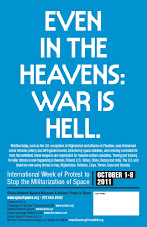
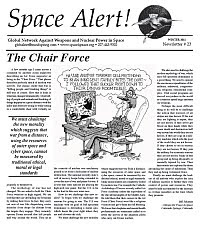

![[Solidarity from Japan for the Jeju] 253 individuals and 16 groups/organizations](http://2.bp.blogspot.com/_gnM5QlRx-4c/TR_YeNVE1yI/AAAAAAAAHWQ/ARyf6oQN0S0/S227/jeju_12_10j.jpg)
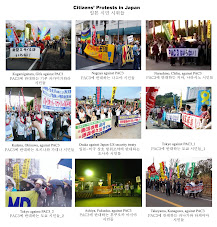
![[Translation] Korean organizations' statement: Immediately cancel the joint ROK-US drill Nov 26](http://2.bp.blogspot.com/_gnM5QlRx-4c/TPOE8VKXHFI/AAAAAAAAGlM/8lryt-8sFjc/S227/1.jpg)
![HOT! [Hankyoreh Hani TV] Beneath the Surface: the investigation into the sinking of the Cheonan](http://4.bp.blogspot.com/_gnM5QlRx-4c/TOI83qht8aI/AAAAAAAAGXU/22SW6Q5ntV8/S227/HaniTV%2BCheonan.gif)

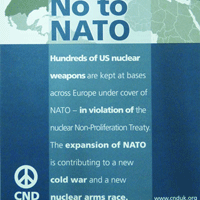

![[Translation]Statement against illegal inspection and unjust lay-off by the Kunsan USAFK!(Nov_2010)](http://4.bp.blogspot.com/_gnM5QlRx-4c/TOPLsVkZMqI/AAAAAAAAGZs/3YnnckIyAaY/S227/gunsan%2Bprotest.gif)
![[Translation] Korean organizations' statement against dispatching special force to the UAE on Nov.](http://4.bp.blogspot.com/_gnM5QlRx-4c/TOP95zHXlCI/AAAAAAAAGak/E0Ug1XtUFfM/S227/antiwarpeace.jpg)
![[Translation] Stop, Joining MD!: South Korean activists' statement and writing on Oct. 25, 2010](http://3.bp.blogspot.com/_gnM5QlRx-4c/TOP7Es4_2sI/AAAAAAAAGac/eWVMPD-U4p0/S227/StopMD.jpg)
![[In Update] People First, NO G-20 (Nov. 6 to 12, Korea)](http://2.bp.blogspot.com/_gnM5QlRx-4c/TJd53XBzHlI/AAAAAAAAFQo/ldO9JPE3eqo/S227/left21_G20.jpg)
![[International Petition] Stop US helipad plan in Okinawa to save great nature](http://4.bp.blogspot.com/_gnM5QlRx-4c/TKC2AHRNzBI/AAAAAAAAFUo/yGWXODTw_uM/S227/yanbaru_w.jpg)

![[Global Network] against the first launch of Quasi-Zenith Satellite, Japan, on Sept. 11, 2010](http://4.bp.blogspot.com/_gnM5QlRx-4c/TIowa1boy4I/AAAAAAAAFDI/82rAi98uq-c/S227/Qzss-45-0_09.jpg)

![[In update] Some collections on the Koreans’ protests against the sanction & war on Iran](http://4.bp.blogspot.com/_gnM5QlRx-4c/TJMvke6t8zI/AAAAAAAAFO4/tamQ8LUnOOA/S227/No+Sanction+on+Iran.jpg)
![[Three International Petitions] to End the Korean war and peace treaty(or peace resolution)](http://1.bp.blogspot.com/_gnM5QlRx-4c/THef7bzWxYI/AAAAAAAAE44/wwdzSDfYhdw/S227/border.jpg)
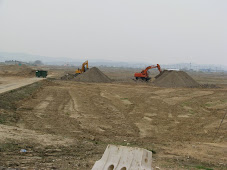


![[Collection of Documents] No Base Learning and Solidarity Program_Korea(June 14 to 20, 2010)](http://1.bp.blogspot.com/_gnM5QlRx-4c/TCTvVuN8NeI/AAAAAAAAEek/8vBJVaHdk10/S227/No-Base-banner.jpg)
![Site Fwd:[John Hines] A U.S. Debate coach’s research trip on the Issues of Korea](http://3.bp.blogspot.com/_gnM5QlRx-4c/TINCO36mzzI/AAAAAAAAE_w/Rds12NcBOXM/S227/Jeju-Peace-Tour.jpg)


![[News Update] Struggle Against the Jeju Naval Base since Jan. 18, 2010](http://1.bp.blogspot.com/_gnM5QlRx-4c/S1vvWaP25uI/AAAAAAAACkg/QvpW1tgOlKM/S226/scrum1.jpg)


![[Urgent] Please spread the Letter!: There was no Explosion! There was no Torpedo! (May 26, 2010)](http://4.bp.blogspot.com/_gnM5QlRx-4c/S_9JmsKEU7I/AAAAAAAAEP8/sAWjSPqxzUI/S227/grounded.jpg)
![Text Fwd: [Stephen Gowans]The sinking of the Cheonan: Another Gulf of Tonkin incident](http://1.bp.blogspot.com/_gnM5QlRx-4c/TAL_FtYKQ-I/AAAAAAAAERE/NEEMijiEcRM/S227/lee-myung-bak.jpg)
![[Japan Focus]Politics in Command: The "International" Investigation into the Sinking of the Cheonan](http://1.bp.blogspot.com/_gnM5QlRx-4c/TBMJ2syJzyI/AAAAAAAAEZU/uTYZccU5vyk/S227/wen_jiabao_and_lee_myungbak.png)
![[Japan Focus] Who Sank the SK Warship Cheonan? A New Stage in the US-Korean War and US-China](http://2.bp.blogspot.com/_gnM5QlRx-4c/S_iQ2vE5ZpI/AAAAAAAAEOU/Oo1SPcAe8FE/S227/buoy_map.gif)
![[Updated on 12/13/10] [Translation Project] Overseas Proofs on the Damages by the Military Bases](http://4.bp.blogspot.com/_gnM5QlRx-4c/S-qSj59gPLI/AAAAAAAAEGM/mwjlFtPE-jo/S227/missile.jpg)
![[International Petition] Close the Bases in Okinawa](http://3.bp.blogspot.com/_gnM5QlRx-4c/S8-z3DYNwNI/AAAAAAAADo4/OswTSchK09M/S227/2.jpg)

![[In Update]Blog Collection: No Korean Troops in Afghanistan](http://4.bp.blogspot.com/_gnM5QlRx-4c/SwnlLD9IewI/AAAAAAAAB9E/oUPssnpNidA/S226/No-Troops-to--Afghanistan.jpg)
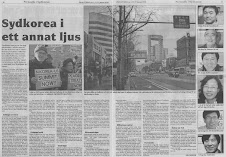

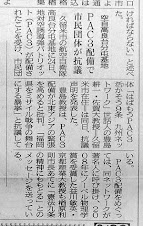

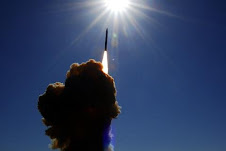






No comments:
Post a Comment